Get ready to bring the outdoors inside! These gorgeous hanging plants will add instant ambiance to any space—and boost your mood too.
Our editors and experts handpick every product we feature. We may earn a commission from your purchases.Learn more.
Get ready to bring the outdoors inside! These gorgeous hanging plants will add instant ambiance to any space—and boost your mood too.
Our editors and experts handpick every product we feature. We may earn a commission from your purchases.Learn more.
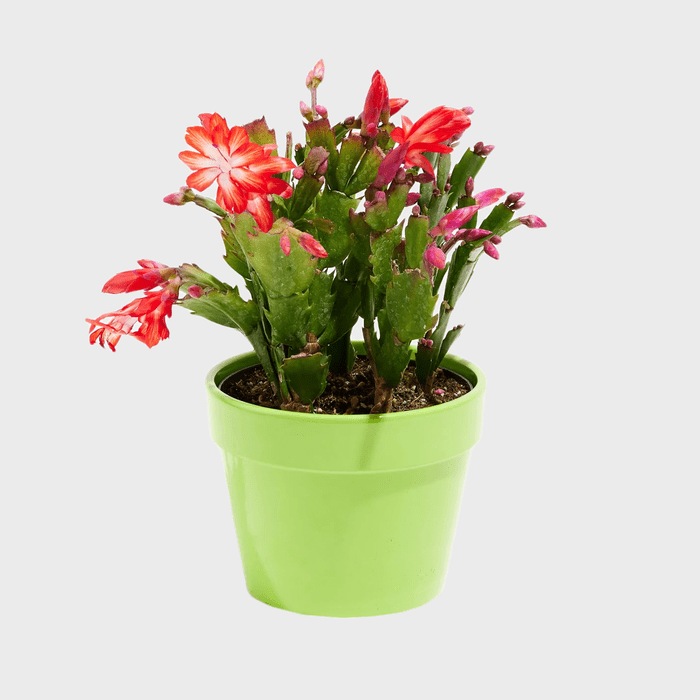 via merchant
via merchant
Just as the holiday season kicks off, this flowering cactus puts on a colorful display—bursting into a bouquet of exotic blooms that last for weeks. The trailing nature of this succulent makes it ideal for hanging pots, and unlike some other cacti, this one doesn’t require abundant direct sunlight. Hang it in a window with bright, indirect light, and water it every two to three weeks. “It’s a surprise at the end of the year, when you think everything else has died off, to see these wonderful pinkish-red flowers,” says Chandrakumar. You can even order them for gifts with plant-subscription boxes.
Pros:
Con:
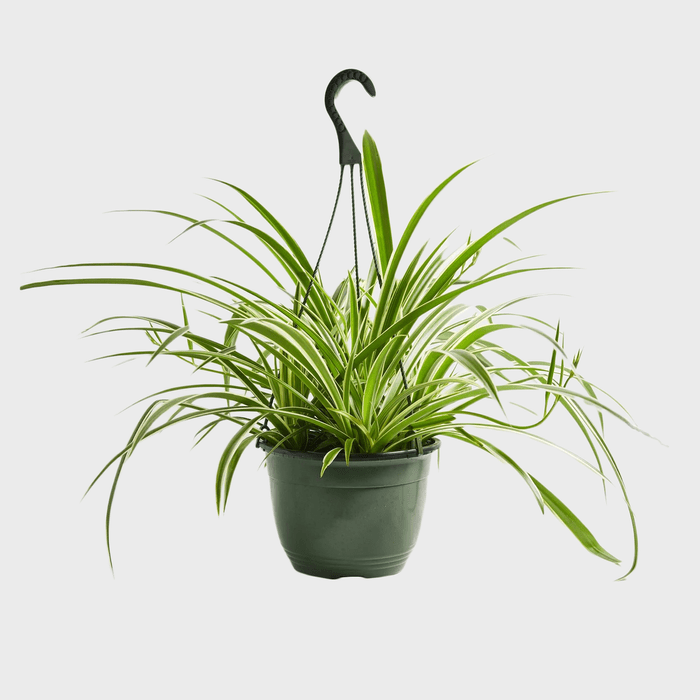 via merchant
via merchant
This spiky-leafed beauty with variegated foliage is probably one of the top two options you think of when you think of indoor hanging plants, and for good reason—it’s an incredibly low-maintenance plant. “It is very adaptable to different growing conditions,” says Elisa McCurdy, creative director of Greendigs. “Spider plants are forgiving if the occasional watering is missed, and they do best in bright, indirect light but can also adjust to lower light conditions.” They’re also among the easiest plants to propagate. A good watering can can help keep your hanging plants healthy; look for one with a long, slim spout to get water directly to the roots.
Pros:
Con:
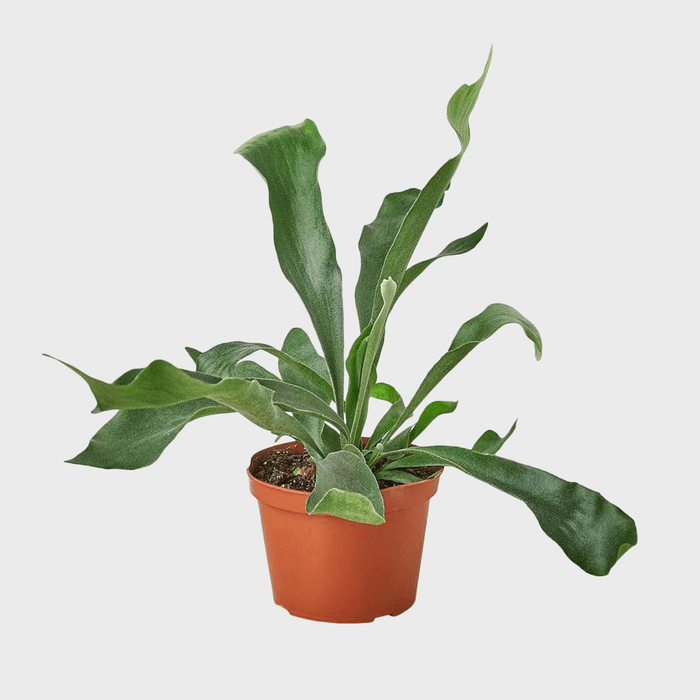 via merchant
via merchant
While the fronds aren’t as complex as some other ferns, this tropical plant has a sleek architectural look to it. The small root system allows it to tuck into a hanging basket very well, and you can put three plants into a pot and grow them so they hang in different directions. They need bright indirect light, warm temperatures and consistent moisture; keep that going so you don’t wind up with a dead plant. “It’s a little secret that it loves bathrooms,” says Chandrakumar. Thus, making it a perfect bathroom plant.
Pros:
Con:
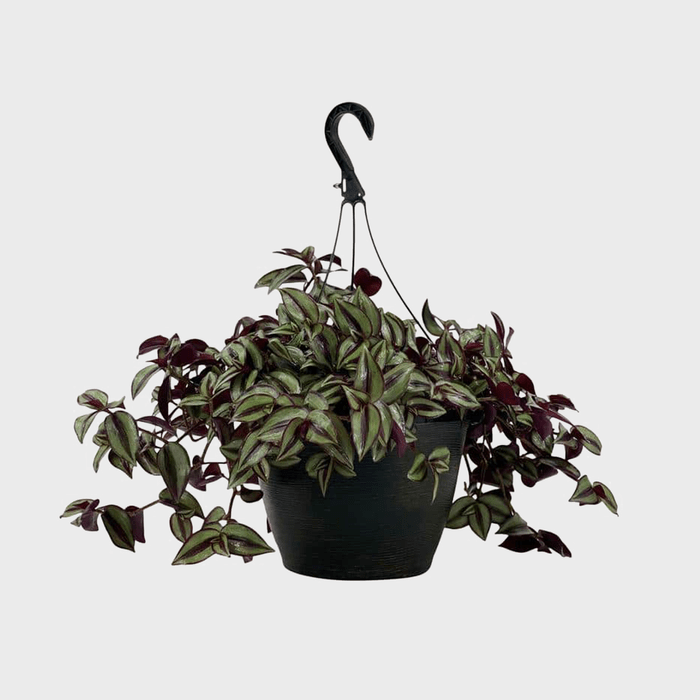 via merchant
via merchant
Plants that trail, creep or climb are known as vining plants and are perfect for hanging baskets, which allow the vines, or “runners,” to spill over the edge of the pot. That makes them look super lush and adds to the ambiance of any room. This one, and a variation known as Tradescantia zebrina, are easy and fast-growing indoor hanging plants; they’re beloved for their green, purple and cream-colored striped leaves. Tradescantia nanouk likes indirect bright light, so make sure the sun’s rays don’t hit the leaves directly. Not sure what “indirect bright light” means? Check out our guide to indoor plant lighting.
Pros:
Con:
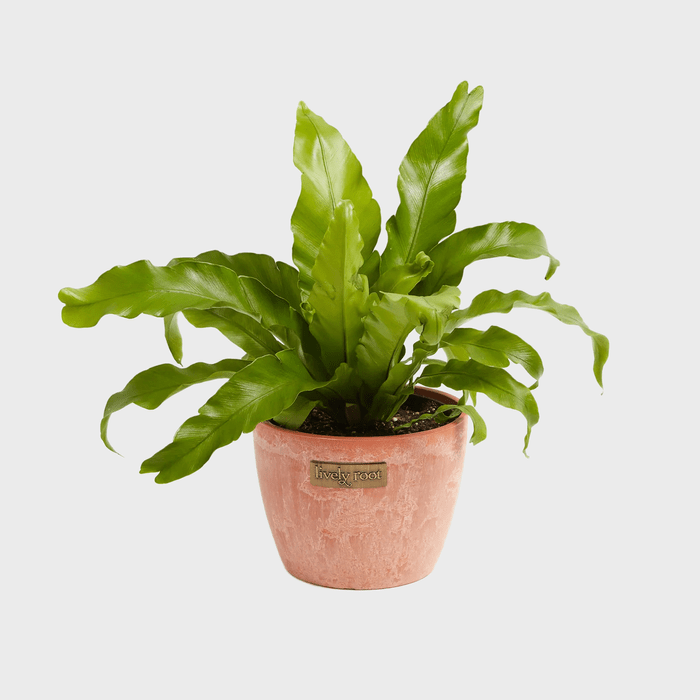 via merchant
via merchant
Easily identified by its wavy, rippled-edge fronds and bright green color, this fern is nontoxic to animals, unlike these plants that are poisonous to dogs. It is tropical, so it prefers humid environments and bright indirect light, although it will tolerate low indirect light. Keep in mind that hanging plants still need adequate drainage, but if you don’t want water dripping, you can use a pot without holes and fill the bottom with lava rocks, which are lightweight and create a place for excess water to pool away from the plant’s roots.
Pros:
Con:
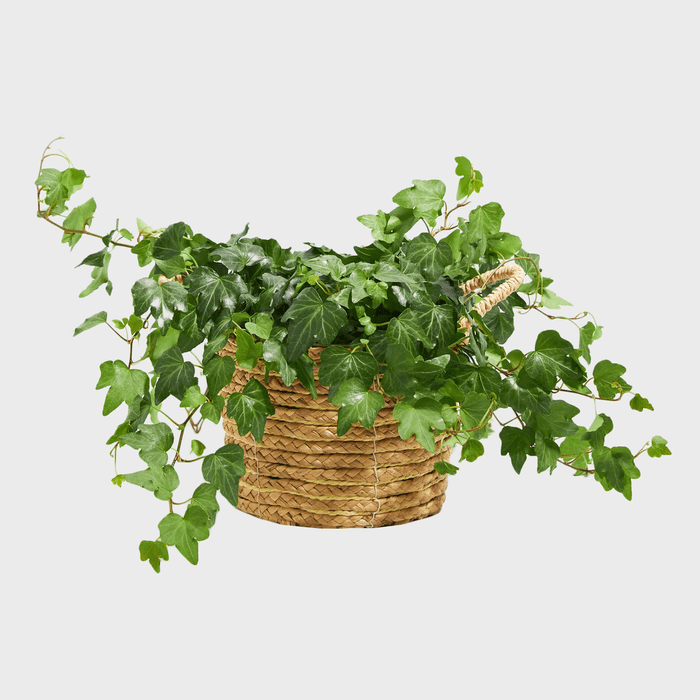 via merchant
via merchant
This rather traditional ivy is often found outdoors, but it does just as well as an indoor hanging plant, and with just as little maintenance, making it ideal for anyone who doesn’t have a ton of time—or doesn’t want to put in a ton of effort. Unlike tropicals, this variegated leafy climber does not like humidity, prefers well-drained soil and thrives best in a window with southern exposure, in indirect light. It adds instant sophistication to any room, also making it a perfect living room plant.
Pros:
Con:
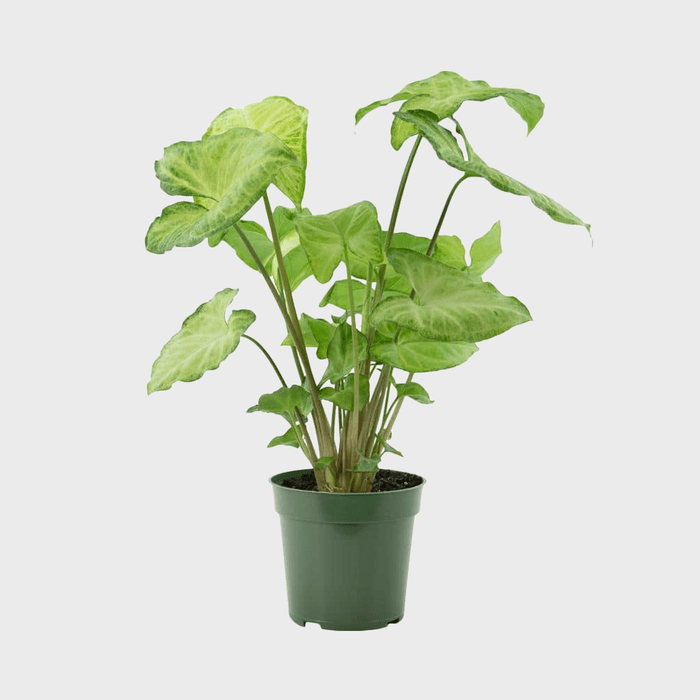 via merchant
via merchant
Its name comes from the unique shape of its large green and yellow leaves, but this hanging plant is also known as the American evergreen plant. Native to the tropics, it loves humidity so much, you can even hang it in a bathroom. It cascades or climbs beautifully if it receives nutrients from liquid fertilizer, and it needs rich, well-drained soil to thrive, preferring indirect light.
Pros:
Con:
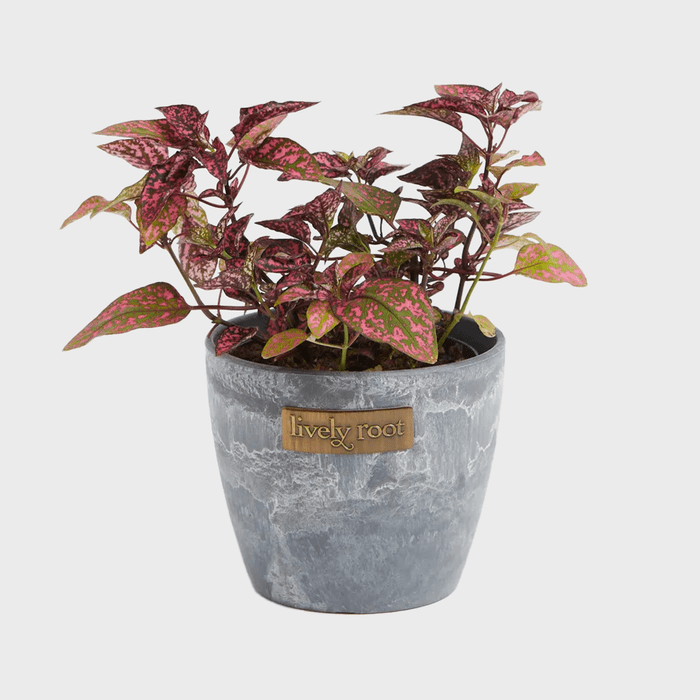 via merchant
via merchant
Simply put, the polka dot plant is adorable, which is one of the reasons it’s also on our list of best small plants. Thanks to its color, pattern and outward personality, it’s becoming increasingly popular with plant collectors. You can find it in various shades of green, pink and purple, and its dappled foliage is naturally eye-catching, drawing attention in a way that can softly fascinate and encourage us to notice nature more. This, coupled with its dramatic response of wilting due to any overwatering or underwatering, is a daily reminder of how you’re living alongside another living thing. FYI, the polka dot plant requires only moderate light, and its foliage is actually more colorful when it’s kept in low light.
Pros:
Con:
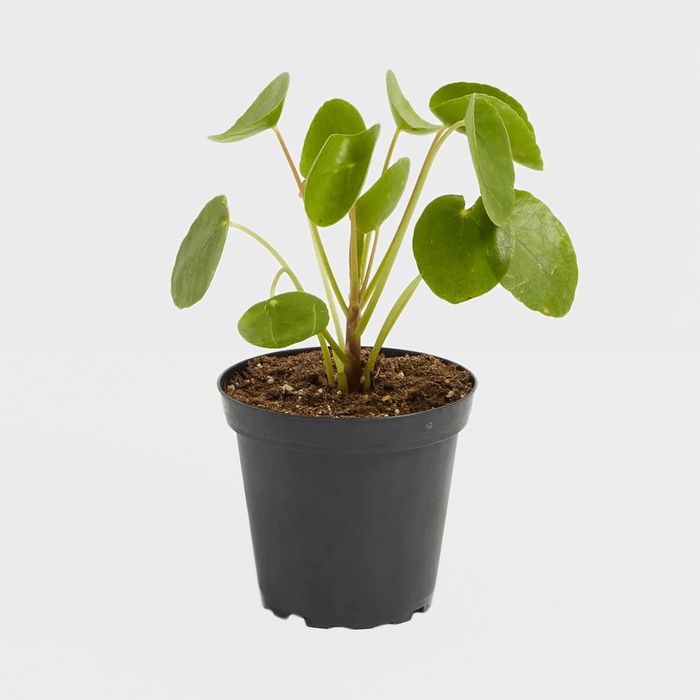 via merchant
via merchant
The most distinctive feature of this plant is its large, coin-shaped leaves, which perch on thin stems—a look that sometimes lead it to be called a UFO plant. It’s a popular choice because of its striking geometric shape, brilliant emerald color and easy care. Just set it in bright indirect light, and water it once a week or so. It’s also safe to have around four-legged friends, and practitioners of feng shui say it brings good fortune.
Pros:
Con:
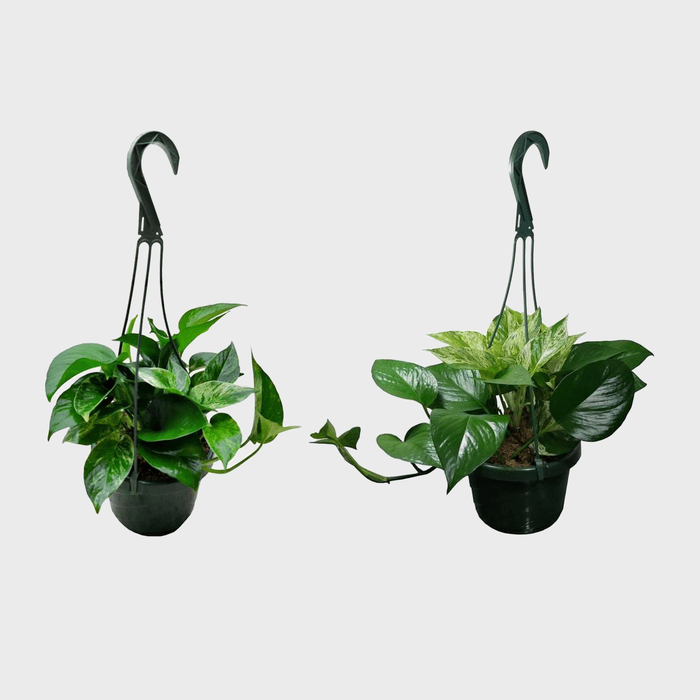 via merchant
via merchant
Pothos, also known as devil’s ivy because it is a fast grower and notoriously difficult to kill, comes in many varieties (the variegated golden and pearls and jade varieties are both popular), and all are lovely options for indoor hanging plants. With its variegated white and green leaves, the marble queen variety really pops. Its roots enjoy being slightly crowded inside a pot, which can make it a great choice for small spaces, and because it can be toxic to furry friends, it’s ideal for hanging high. Pothos plant care is also relatively easier, making it an ideal houseplant.
Pros:
Con:
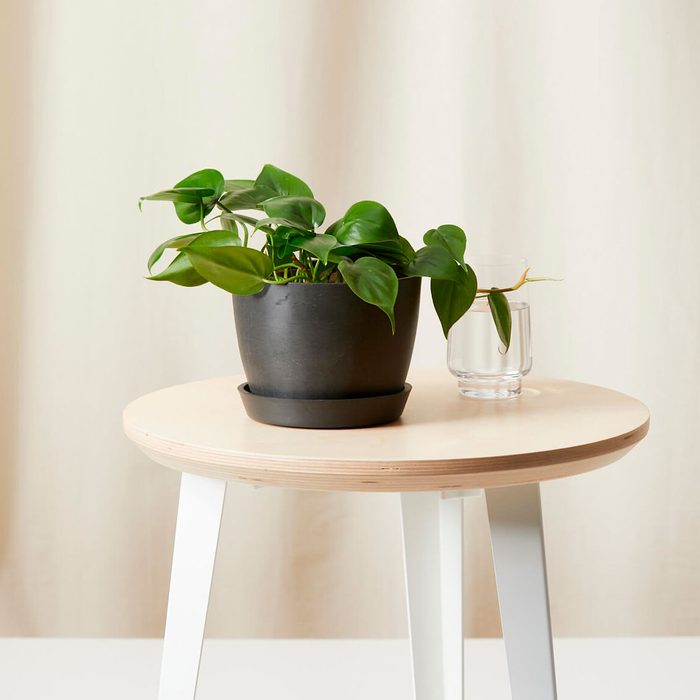 via merchant
via merchant
Who could resist this plant’s heart-shaped leaves? Plus, the name philodendron comes from the Greek word for love, philo, so it’s extra sweet. This fast-growing vine will thrive in low-light or medium-light conditions, making it perfect for rooms that don’t get a ton of natural light. But beware: All varieties of philodendron can be toxic to pets—all the more reason to hang them high out of reach, preferably over a counter to catch any fallen leaves. More humidity encourages larger leaves, so if that’s the look you want, use a mister regularly.
Pros:
Con:
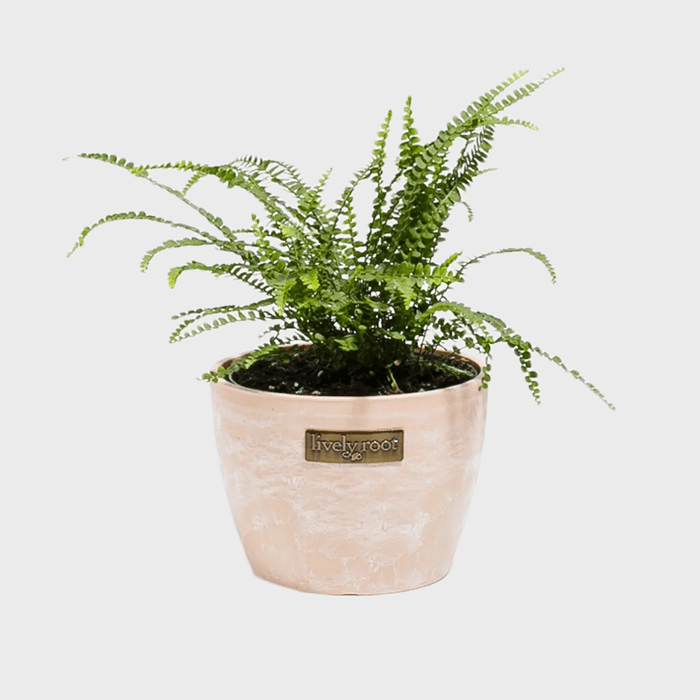 via merchant
via merchant
This smaller variety of Boston fern grows only about a foot high but is more forgiving than its cousin. “It is a sweet little plant to add to any fern collection,” says Debbie Neese, a horticulture expert for Lively Root. “And bonus: It has a lemony fragrance!” Ferns require high humidity and do great in bathrooms, but don’t leave their care up to chance. Neese recommends using a 3-in-1 soil meter to determine your plant’s water and sun needs. “Too many people ‘over love’ their indoor plants by giving them too much water,” she says. “So many plants could have been saved by using this little smart gadget.”
Pros:
Con:
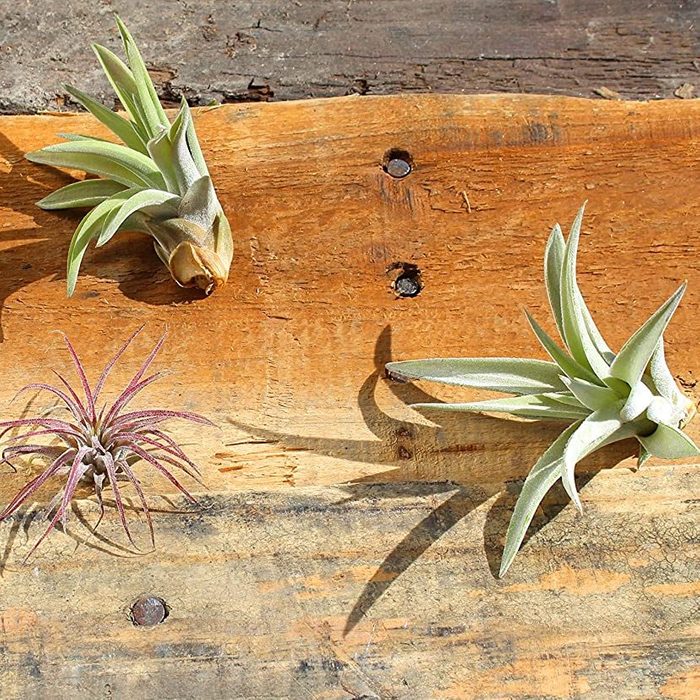 via merchant
via merchant
Talk about low maintenance—air plants don’t even need soil to live. Just soak them in water every three weeks, and they can survive just about anything. Their soil-less existence makes them easy to place in wire or glass wall hangers, where their delicate tendrils make a beautiful visual. Plus, they’re great for small spaces.
Pros:
Con:
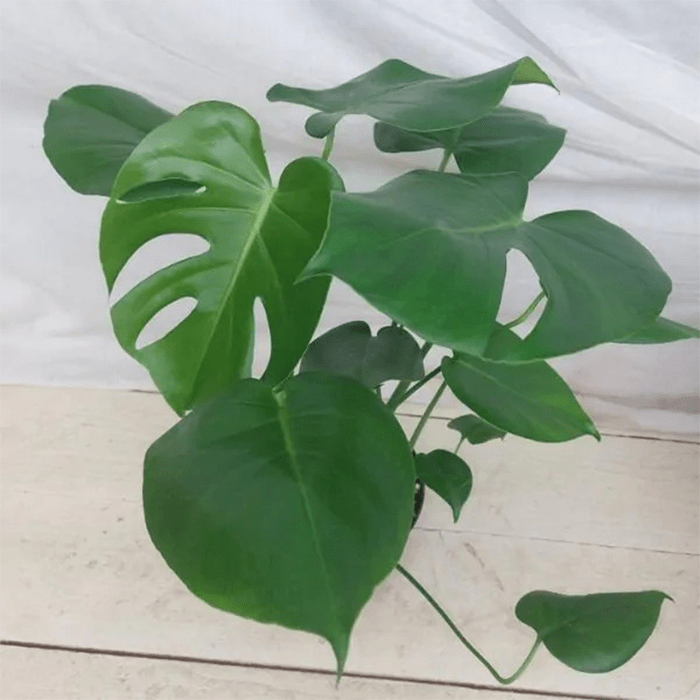 via merchant
via merchant
Few plants are as distinctive as this one, with its large, lace-like leaves. Though not typically grown as a hanging plant, it can be done to great effect. “I’ve seen them used in large pots and allowed to grow down instead of up, and I find it quite charming,” says Jeff Dinslage, CEO of Nature Hills. Swiss cheese plants have a proclivity to climb, and due to their tropical origins, they do best in bright direct light or partial shade with regular watering.
Pros:
Con:
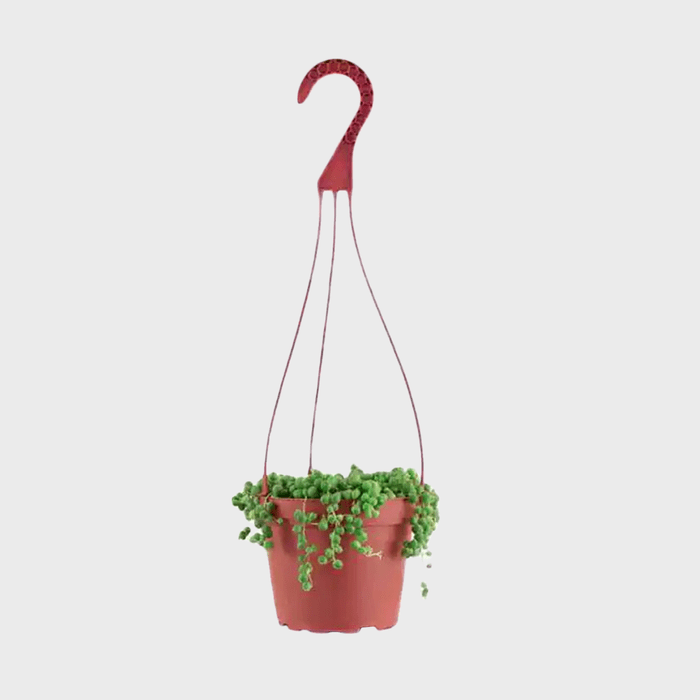 via merchant
via merchant
If you have an indoor hanging plant, you should be aware of one potential issue: If you can’t see the plant’s soil or it’s in a less accessible location, it might not get as much care as if it were on an eye-level shelf. For that reason, it makes sense to put more hardy and drought-tolerant plants in baskets. Trailing succulents, like the string of pearls, do well in a hanging basket because they don’t need a lot of water, and the long tendrils of sphere-shaped leaves have a beautiful, modern look. For placement, always choose a bright spot within three to four feet of a window.
Pros:
Con:
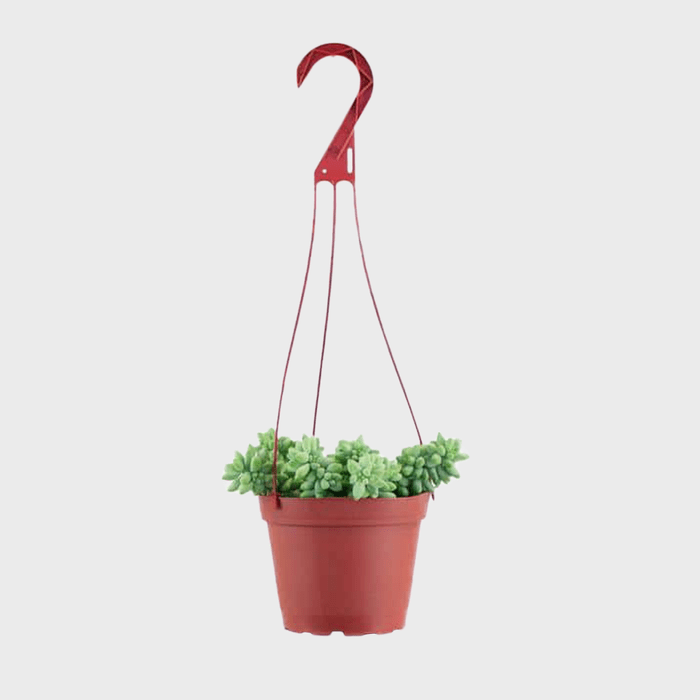 via merchant
via merchant
While most people think of succulents as short and squat, there are several varieties of these desert plants that trail and make the perfect hanging plant. Donkey’s Tail, a type of string of pearls, is great for beginners and can tolerate a little more water than normal succulents. Make sure you use succulent soil, which drains well. Bonus: Donkey’s tail looks really interesting as a hanging plant, because it can grow as long as you allow it to.
Pros:
Con: